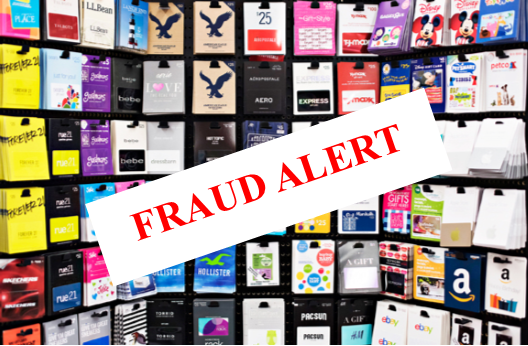As we approach the holiday season, gift cards are often an attractive gift for the hard-to-buy person or a relative who lives far away. However, there are risks with gift cards, as noted below.
Gift card fraud is a burgeoning concern in retail and finance. Unfortunately, as convenient and versatile as gift cards are for consumers, they present an attractive opportunity for fraudsters. To better understand and combat this issue, we need to look closer at the current statistics, the reasons behind its prevalence, and what retailers, banks, and consumers can do to safeguard themselves.
Current Statistics
Gift card fraud has been on the rise for several years. With the proliferation of online shopping, fraudsters have found more avenues to exploit these cards. Major retail chains are often the primary targets, but no business is immune. Especially vulnerable are those retailers that allow immediate online use of gift cards after purchase. The losses incurred due to gift card fraud run into the millions annually.
According to Captial One, 23% of consumers in the U.S. have given or received gift cards with no funds on them, and 54% of these people were told that no refund or credit was possible. Target gift cards represent the highest reported losses to fraud, with victims reporting an average of $2,500 and 30% reporting losses of over $5,000.
Why Does Gift Card Fraud Happen?
- Anonymity: Gift cards are much like cash – they are anonymous and don’t require identification, making them attractive to fraudsters.
- Online Transactions: The ability to use gift cards online means fraudsters can make purchases without physical cards.
- Lack of Regulation: Gift cards often don’t have the same protective measures or regulations as credit or debit cards.
- Easy to Resell: Stolen or fraudulently obtained gift cards can be quickly sold at a discounted rate on third-party websites.
How Can Retailers, Banks, and Consumers Protect Themselves?
For Retailers
- Delayed Activation: One effective method is to delay the activation of gift cards by a few hours or even a day, making immediate online fraud difficult.
- Purchase Limits: Limiting how many gift cards can be purchased at once can deter bulk-buying scams. Purchase limits on each card also help.
- Require Additional Verification: For online purchases, ask for additional details such as the CVV or an OTP (one-time password) before the transaction is approved.
- Monitor Unusual Activity: Use analytics to track unusual purchasing patterns and take action when anomalies arise.
For Banks
- Educate Customers: Regularly inform customers about the risks of buying or using gift cards online.
- Enhanced Verification: Similar to retailers, banks can implement additional verification steps when detecting a gift card purchase.
- Collaboration: Work closely with retailers to share information and analytics on suspected fraud.
For Consumers
- Buy from Reputable Sources: Only buy gift cards directly from the retailer or an authorized dealer.
- Inspect Before Purchase: Ensure no PIN has been tampered with or exposed. Check the barcode and see if the casing (many times a cardboard holder) has been tampered with.
- Report Suspicion: If you suspect a gift card has been tampered with or is fraudulent, report it immediately to the retailer and law enforcement.
Conclusion
Gift card fraud is a pressing concern, but its impact can be lessened with combined efforts from retailers, banks, and consumers. It requires a mix of education, vigilance, and technology to make gift cards safer and ensure they remain the convenient gift option they are meant to be.
Timothy Dimoff – Speaker, National Expert Witness, Author
“Gift card theft is only going to increase until we institute additional preventive measures that can be utilized with little additional inconvenience!”
Timothy Dimoff
Tim can share his thoughts and insights on gift card fraud with your company or organization. Please call, email, or fill out his contact form. He will get back to you within 24 hours.
